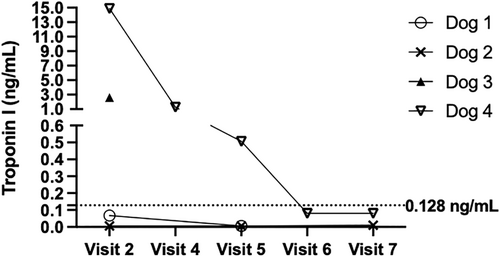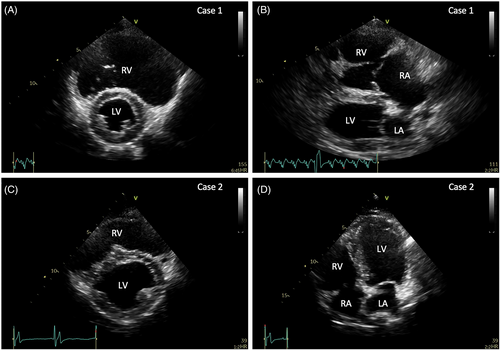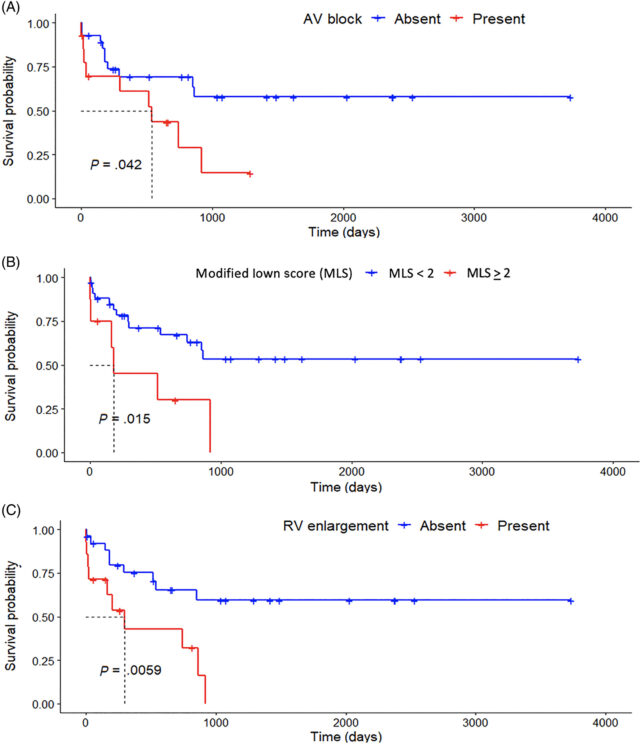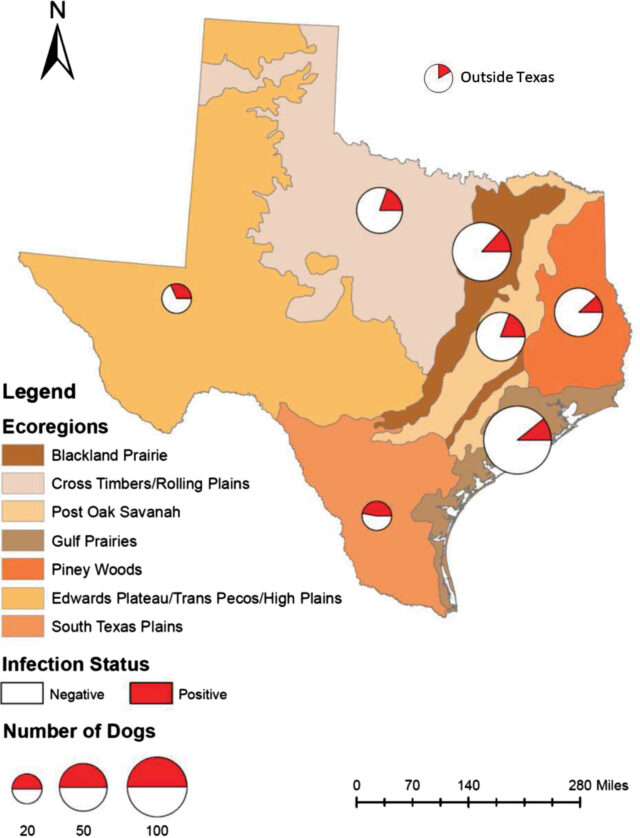Title: Positive clinical outcome using a modified dosing regimen of benznidazole in dogs at high risk for infection or acutely infected with Trypanosoma cruzi
Authors: Sukjung Lim, Stephanie Collins, Sarah A. Hamer, Rick L. Tarleton, and Ashley B. Saunders
Journal/Date of Publication: Journal of Veterinary Internal Medicine, 2024
DOI: 10.1111/jvim.17028
Objective: The study focuses on the prevention and management of Trypanosoma cruzi (Chagas disease) infection in dogs, particularly the effects of a modified benznidazole regimen.
Type of Study: Prospective
Conclusions:
- Prophylactic benznidazole prevented T. cruzi infection and cardiac disease in two dogs monitored over a 2-year period.
- One dog without prophylaxis died from acute Chagas-related myocarditis, while another developed severe arrhythmias but showed improvement with higher-dose benznidazole treatment.
- Though the sample size was small, these findings suggest potential clinical benefits from prophylactic and early benznidazole use, reducing morbidity from cardiac damage.
Clinical application:
- Prophylactic BNZ: Modified dosing of benznidazole may prevent T. cruzi infection in some high-risk dogs.
- Early treatment benefit: Higher benznidazole doses (17.5 mg/kg, twice weekly) in acutely infected dogs reduced cardiac biomarker (cardiac troponin I) concentrations and arrhythmias, even without total parasitological cure.
- Cardiac troponin I as a marker: Monitoring levels can help track cardiac damage and recovery during treatment.
- Prevention in endemic areas: Some dogs in areas with high vector exposure may benefit from prophylactic treatment during peak transmission seasons.
- Potential for reduced mortality: Early intervention with benznidazole could reduce sudden death risk from Chagas disease in dogs.
- No major adverse effects: Modified benznidazole dosing was well-tolerated in these dogs, with no reported adverse effects.

Serum cardiac troponin I results for the 4 dogs. Dogs 1 and 2 were in the prophylaxis group, dog 3 was in the nonprophylaxis group with death after visit 2 and dog 4 was in the nonprophylaxis group and subsequently started on a modified treatment dose regimen of benznidazole. The upper limit of the reference range (0.128 ng/mL) is represented by the dotted line.



